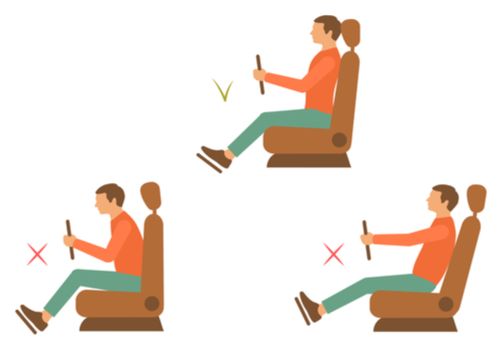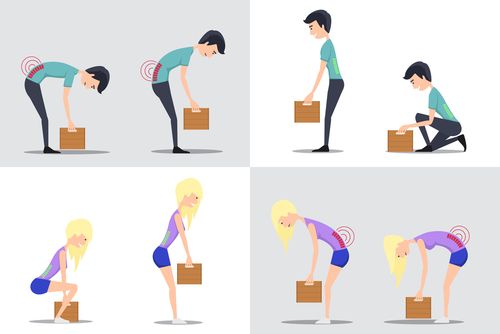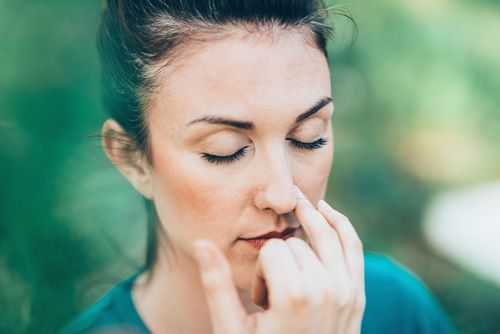 Written by Sara McEvoy, PT, DPT
Written by Sara McEvoy, PT, DPT
Traveling? You're in great company!
According to AAA, more Americans are traveling than ever before, with increasing numbers of trips taken both domestically and internationally. Just during last year’s holiday season, over 107 million Americans traveled more than 50 miles away from their homes—the highest number ever reported, according to estimates.
With so many people hopping into trains, planes, and automobiles, now is as good a time as any to talk about one of the most common travel-related problems—neck pain. While this broad musculoskeletal condition affects millions of people every year, there are plenty of simple things you can do to avoid dealing with it yourself while venturing away from home.

Checking bags? How about checking your posture?
Poor posture (especially slouching in your seat) increases strain on ligaments, muscles, discs, tendons, and other connective tissue structures in and around your cervical spine.
What does good seated posture look like? While there's no one "perfect" position, here's a good alignment to start:
A comfortable and form fitting neck pillow offers you the support you need to rest, relax, or even sleep during travel without allowing your neck to fall into an awkward or uncomfortable position.
A lumbar support cushion can also decrease stress in the spine and help you maintain better seated posture. Lumbar cushions are also available with seat cushions built-in to even further improve your comfort and seated support.
Staring down at your phone or tablet for hours on end is bound to give you neck pain and stiffness—along with other symptoms including headaches, jaw pain, and shoulder and arm discomfort.
To use your "smart" technology in a smarter way, take frequent breaks from your devices. If texting on your phone, try holding your device up at eye level to avoid looking down.

Even small bags can lead to aches and pains if carried improperly! Be sure to use bags with thick and padded straps, use both straps of a backpack, and use caution when using roller bags, as these can easily snag and tip, leading to strains in the shoulder and neck.
Additionally, ask for help if you need assistance getting a bag in or out of an overhead bin, trunk, or other compartment.
The human body was meant to move. When it doesn't, a snowball effect can begin, leading to pain and dysfunction.
If you're taking a long trip, get up and move around at least once per hour, or as much as possible. This is essential for reducing tension in your neck and back—amazingly, sitting imposes more force on your spine than standing does!
Additionally, add in some simple neck and shoulder stretches at least one to three times per hour. Effective ones to try include:
Staying well hydrated during your travels offers several benefits—beyond just neck pain.
For one thing, adequate hydration can help minimize jet lag. Plus, staying hydrated helps your circulation and naturally encourages you to get up frequently, since—ahem—you'll need to use the facilities more often.
Lastly, the connective tissues in your neck (as well as the rest of your body) need adequate hydration to stay pliable and healthy. Any neck stiffness or pain that you do experience while traveling may only grow worse if you're dehydrated.
By the way, headaches and neck pain are a common side effect of dehydration, which can make a case of neck pain even more challenging to deal with.

Stress is a common underlying factor of neck pain. And while staying relaxed while traveling can seem almost impossible at times, it's certainly a worthwhile goal, for physical and mental reasons.
Some tips for staying calm during travel include:
It's never a good time for neck pain...especially when you're supposed to be enjoying a little R&R with your loved ones! Be sure to test out these neck pain prevention tips for your future travels, and stay safe, comfortable, and healthy no matter where the road takes you.

Sara McEvoy, PT, DPT, is a licensed and board-certified Doctor of Physical Therapy. She has direct clinical experience within the long-term acute care and skilled nursing settings, and has a special interest in geriatrics and neurological rehab. She is also a freelance writer who creates content almost exclusively within the health and wellness fields.